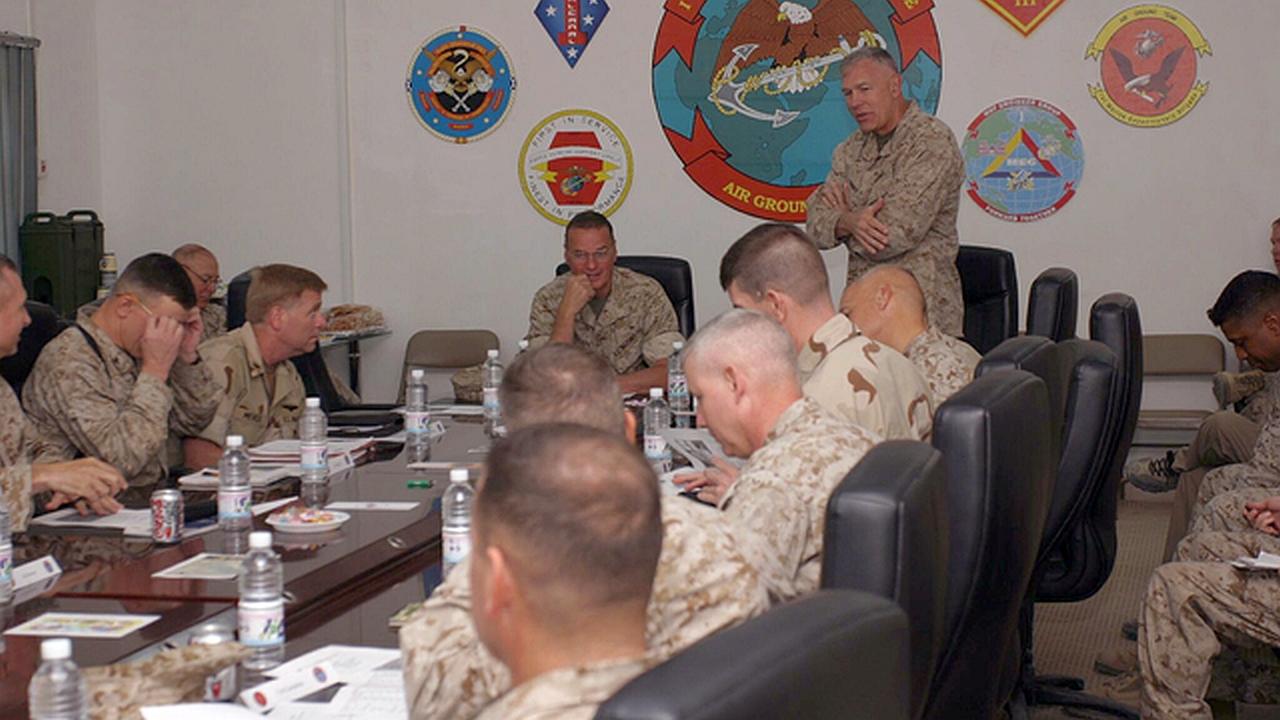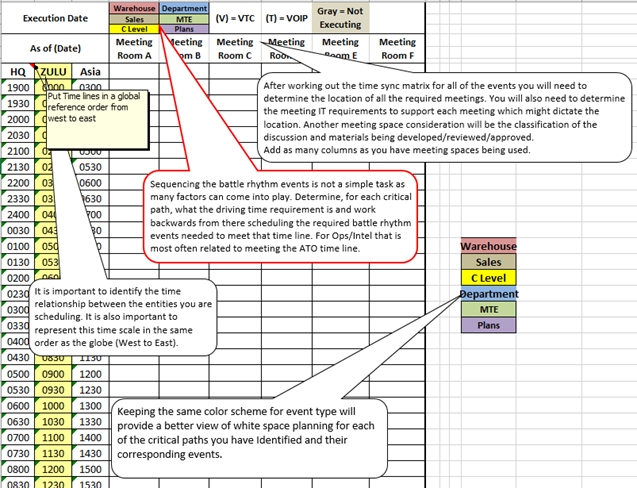
Organization Management Rhythm (part 6.5): Tools – Time-Space Matrix
This article is part 6.5 of a series of articles on Organization Management Rhythm.
The purpose of the Time-Space Matrix is to de-conflict the physical meeting locations, required IT services, and the available “whitespace” between linked critical path events executed by the staff in support of the organization’s decision cycle and their shared understanding. The Organization Management Rhythm Manager (OMRM) should reference the Time-Space Matrix along with the calendar when considering changes to current meeting events or the creation of new events. The Time-Space Matrix helps the OMRM account for these limitations and ensures all applicable dimensions of the Organization Management Rhythm (time, space, and services) are accounted for in Organization Management Rhythm change management.
In order to account for cross-functional meetings that do not occur daily, it is necessary to create a Time-Space Matrix for each day of the week. The Time-Space Matrix is oriented in the following manner. The available meeting locations at the organization are listed across the top of the matrix. A time scale is displayed vertically down the left side of the matrix. It may be necessary to display more than one time zone, in the event that the organization is geographically-dispersed. The meeting events for each day are populated in the matrix based on when and where they occur. Events requiring video teleconference call (VTC) services to integrate representatives from other organizations are noted with a “(V)”. Similar to the other Organization Management Rhythm tools (Information Flow Diagram (IFD), 7-Minute Drill Rollup, Staff-Utilization Matrix, and Organization Calendar), the events are color-coded to denote whether they are senior staff touch-points or if they belong to one of the three typical critical paths (Operations, Plans, or Man-Train-Equip (MTE)).

Acknowledgements: Thank you to Tomi Antill, Keith Davis, Elise Keith from Lucid Meetings, JFHQ-C Leadership, and Kendra Albright from Kent State University, without whose support this series would not have been possible.
Header image source: U.S. National Archives, Public Domain.
Reference:
- Turner, J. A., & Williams, D. E. (2020, October 1). JECC KM Practitioners Training. https://www.jecc.mil/Training/JECC-KM-Practitioners-Training ↩





